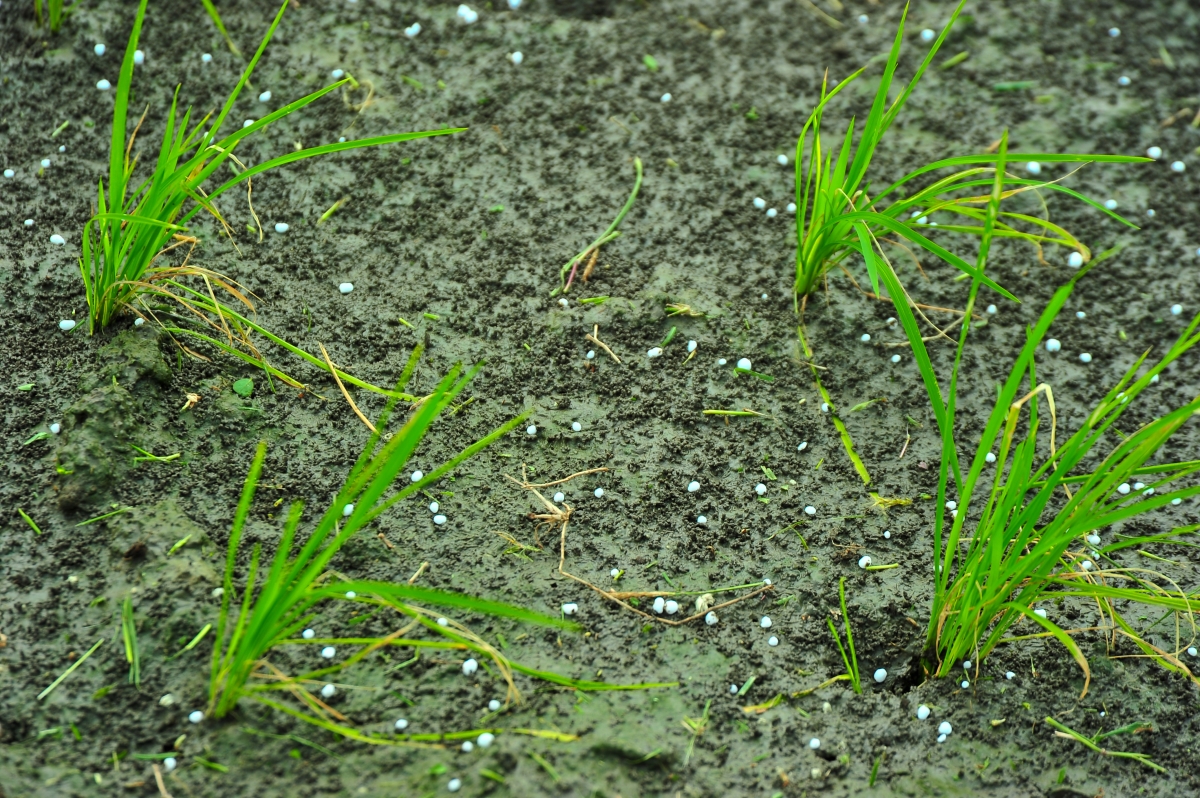The use of integrated fertilization combining mineral and organic fertilizers has a strong potential and could be available and affordable for smallholder rice producers. An advantage of the application of organic wastes as fertilizer is that they usually provide nutritive elements to crops at little added cost along with the addition of organic matter to enrich the soil.

.
In Mozambique, rice is cultivated over a total area of 320,000 hectares, thus representing the second most important source of cereal production. The average productivity, however, is low (about 1.04 Mg/ha), partly due to inappropriate or poor land preparation (burning crop residues, as well as the use of fire for opening new areas) and inadequate fertilizer management such as rate and timing of fertilizer application.
This occurs mainly because most of this production is carried out by smallholder farmers who are engaged in rudimentary subsistence agriculture, depending mostly on rain as the water source, use of local rice varieties, low technical support in the management of soil fertility, and minimal use of pesticides and fertilizers.
Inadequate fertilizer input is one of the most limiting factors to rice production. Furthermore, water is another vital factor that constrains rice production, namely water access, and additionally, weak water management capacity in the fields to guarantee timely adequate supply.
The fertilizer application rate in Mozambique has remained at less than 5.7 kg/ha, a cause for the consistently low production. Intensive rice production and future rice demand will require intensive knowledge-based farming strategies for the efficient use of all inputs, including fertilizer nutrients.
The use of integrated fertilization combining mineral and organic fertilizers has a strong potential and could be available and affordable for smallholder rice producers. An advantage of the application of organic wastes as fertilizer is that they usually provide nutritive elements to crops at little added cost along with the addition of organic matter to enrich the soil.
Compared with chemical fertilizers, nutrient availability is dependent on the mineralization rate of the organic material, which is generally low due to the high C/N ratio of these products leading to low crop growth and yield. Organic fertilizers with lower nutrient releasing ability limit uptake of nutrients and fail to meet short-term crop requirements.
The main objective of the present study was to evaluate the agronomic effect and economic benefits of combined fertilization of rice production using mineral fertilizers and organic materials as nitrogen (N) sources in Mozambican conditions.
The results observed in this study suggest that integrated use of manure and synthetic urea N sources is more efficient than isolated application of urea or animal manure for rice growth and yields as well as soil quality. The premise in this study was that solutions proposed here should not lead to any increase in production costs and should contribute to a significant increase in rice yields even for farmers with low or no capacity to invest in chemical fertilizers.
The combination of urea, beef cattle manure, and poultry litter at a rate of (40%:30%:30%) produced good results and is thus recommended to smallholder farmers for better optimum crop production on the Chókwè Irrigation Scheme.
Consequently, the smallholders should focus on manure combined with synthetic urea, which shows better results in response and economic evaluation. This study recommends more training be provided to smallholders to optimize alternatives and use of available resources such as animal manure fertilizer.
This will help overcome difficulties in fertilization and contribute to enhancing sustainable production and economic income in the region, also following a circular economy approach. Monitoring, however, is also advised to avoid any long-term environmental or health impacts that may occur.
Read the full study:
Ismael F, Ndayiragije A, Fangueiro D. (2021) New Fertilizer Strategies Combining Manure and Urea for Improved Rice Growth in Mozambique. Agronomy; 11(4):783. https://doi.org/10.3390/agronomy11040783





